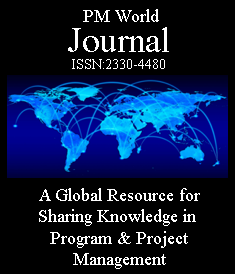Lessons Learned from the PMMM Research Series
SERIES ARTICLE
By Darcy Prado, PhD
Belo Horizonte (MG) – Brazil
ABSTRACT
This is the second article in the series “Lessons Learned from Maturity Research”. It uses the database from our maturity research to analyze the relationship between some performance indicators of completed projects and maturity levels and discusses some interesting conclusions, such as the difficulty in having a 100% successful portfolio. In order to properly understand this text, it is very important that the reader is already familiar with the article published in the previous issue of this journal [1].
1 – INTRODUCTION – PROJECT PERFORMANCE INDICATORS
There are several indicators to measure the performance of completed projects. In our online research, we used four:
-
- Success
- Delay
- Cost overruns
- Execution of the planned scope
When the user answers each question related to performance indicators, he or she should interpret it as being applied to the entire set of projects completed in the last period (for example, in the last year). It is certainly necessary to collect data before answering such questions. For example, in a certain department, the evaluation of the portfolio of projects completed in the last year could be as follows:
-
- Success:
- Total success: 53%
- Partial success: 34%
- Failure: 13%
- Average delay: 20%
- Average cost overrun: 12%
- Average execution of the planned scope: 75%
- Success:
The “Success” indicator is not so easy to understand and deserves an explanation. The definition of success can vary when we consider different categories of projects, scenarios, types of clients, etc. Ideally, the user should have their own definition of success that is appropriate for their department. Since this is not always the case, our website suggests that the user use a generic definition created by us and inspired by that of the Standish Group [2]. It is as follows:
More…
To read entire article, click here
Editor’s note: The Project Management Maturity series of articles by Prof Darci Prado is based on his extensive research on this topic in Brazil and other countries. Darci is the developer of the Prado Project Management Maturity Model which has been successfully implemented by many organizations in Brazil. More about this model and related research can be found at. https://maturityresearch.com/en/home-en/
How to cite this work: Prado, D. (2025). Peculiarities of the “Performance versus Maturity” Relationship, Lessons Learned from the PMMM Research, Series article 2, PM World Journal, Vol. XIV, Issue V, May. Available online at https://pmworldlibrary.net/wp-content/uploads/2025/05/pmwj152-May2025-Prado-Peculiarities-of-Performance-vs-Maturity-series-article-2.pdf
About the Author

Darci Prado, PhD
Belo Horizonte (MG) – Brazil
![]()
Darci Prado is a consultant and partner of FALCONI in Brazil. He is an engineer, with graduate studies in Economical Engineering at UCMG and PhD in Project Management from UNICAMP, Brazil. He has worked for IBM for 25 years and worked with UFMG Engineering School for 32 years. He holds the IPMA Level B Certification. He was one of the founders of Minas Gerais State and Parana State PMI chapters, and he was a member of the Board Directors of the Minas Gerais State PMI chapter during 1998-2002 and member of the Consulting Board during 2003-2009. He was also the president of IPMA Minas Gerais State chapter during 2006-2008. He is conducting Project Management maturity research in Brazil and Italy. He is author of nine books on project management and is also author of a methodology, a software application, and a maturity model for project management. Darci can be contacted at darciprado@uol.com.br.
To view other works by Dr. Prado, please visit his author showcase in the PM World Library at https://pmworldlibrary.net/authors/darci-prado-phd/









